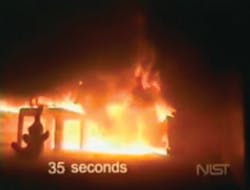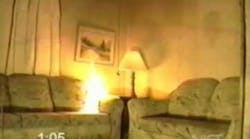Is response time the white elephant of the fire service?
According to Wikipedia, "A white elephant is an idiom for a valuable, but burdensome, possession of which its owner cannot dispose and whose cost (particularly cost of upkeep) is out of proportion to its usefulness or worth. The term derives from the story that the kings of Siam were accustomed to make a present of one of these animals to courtiers who had rendered themselves obnoxious, in order to ruin the recipient by the cost of its maintenance."
Fire officers tell me that fire department management, city managers and elected officials hold them accountable for getting out of the station in 60 seconds and want to know why they do not meet that standard. NFPA 1710 has a 4-minute arrival time for the first engine 90% of the time and an 8-minute arrival time for the full alarm 90% of the time. I do not know of any fire department that meets that standard. But, every department and city reports the response time and it is a measure of a job well done, even if the occupants are injured or killed. Response time is used to keep a fire station open or justify closing it. We never get there fast enough when your house is on fire.
Society is addicted to the notion of response time because we are stuck on the manual fire suppression model of fire safety. In other words, when a fire starts we expect a group of people to come rescue the occupants, put the fire out and keep the fire from spreading and destroying the community. This concept is left over from Ben Franklin’s notion of fire protection.
The manual fire suppression model is still the most prevalent fire protection model today and will be for the foreseeable future. It explains why 32 states have passed laws forbidding mandatory state residential fire sprinkler building codes for new construction. The stated rational is the added cost of fire sprinklers to new construction is not worth the money and will negatively impact home construction and sales, even though the cost of home fire sprinklers today is less the $2 per square-foot with new construction. The idea of rejecting home fire sprinklers is driven by the home builders association and the fire service has not been able to counteract this political influence. So, society will continue to use the response time of fire trucks as a measure of fire safety.
Put these in the order of importance:
- how fast the fire truck arrives at the incident
- how fast the fire truck leaves the station
- how fast dispatch sends out the alarm
- how fast 911 notifies the fire department
- how fast a human or something notifies 911 that there is a fire
- how fast the fire is discovered by a human or something and occupants decide to get out of the building, stay out and decide to call for help
If you do not buy the white elephant argument, let’s try science. Flashover can happen in three minutes (watch video here). That is before anyone can discover the fire, escape the building, call 911, dispatch the fire units and finally we can respond. If you do not have smoke alarms and fire sprinklers, we cannot save your family and your property.
Does the fire service have the courage to tell the truth about response time? A fire department's average response time is less important than the number of homes that have working smoke alarms. The fire service can never have enough fire stations, fire trucks and firefighters to take the place of residential fire sprinklers. Please put these numbers and facts into your next annual report. If we don’t, we will continue to keep the fire service response time white elephant to the determent of public fire safety and firefighter safety.
When the king tries to give you a white elephant, don’t take it. Ask for smoke alarms and residential fire sprinklers because that is the science behind measuring fire safety response time. No matter where you live, even in Siam.
DR. BURTON A. CLARK, EFO has been in the fire service for 44 years. He he was a firefighter in Washington, DC, assistant fire chief in Laurel, Md. and the Management Science Program Chair at the National Fire Academy. Clark has a BS is in business administration from Strayer University, a MA in Curriculum & Instruction from Catholic University and a Ed.D. in adult education from Nova Southeastern University. He studied fire science at Montgomery College with Professor Frank Brannigan, Emergency Management at the Emergency Management Institute, National Security at the National Defense University, and is a graduate of the National Fire Academy Executive Fire Officer (EFO) Program. He is a nationally certified Fire Officer IV, Chief Fire Officer Designee for nine years, and a Eagle Scout mentor. Clark writes, lectures, and teaches fire service research, safety, culture, and professional development worldwide. He can be reached at [email protected].

Burton Clark
Dr. Burton A. Clark, EFO, has been in the fire service for 50 years, including the District of Columbia in Washington, DC, Prince George's County Fire Department in Maryland and the National Fire Academy. He served as assistant fire chief in Laurel, MD, as an operations section chief at DHS/FEMA during national emergencies and disasters and as a Visiting Scholar at Johns Hopkins University. Clark presently serves on the Board of Advisors for the Fire Service Psychology Association and the Board of Governors for the John M. Moschella Fire Service Research Grant Trust. He is a technical expert reviewer for the National Institute for Occupational Safety and Health's Fire Fighter Fatality Investigation and Prevention program and a doctoral dissertation advisor at various universities. Clark is the author of "I can't Save You, But I'll Die Trying: The American Fire Culture." His webpage is americanfireculture.com. Clark was inducted into the National Fire Heritage Center's Hall of Legends, Legacies and Leaders. Clark can be reached at [email protected].









